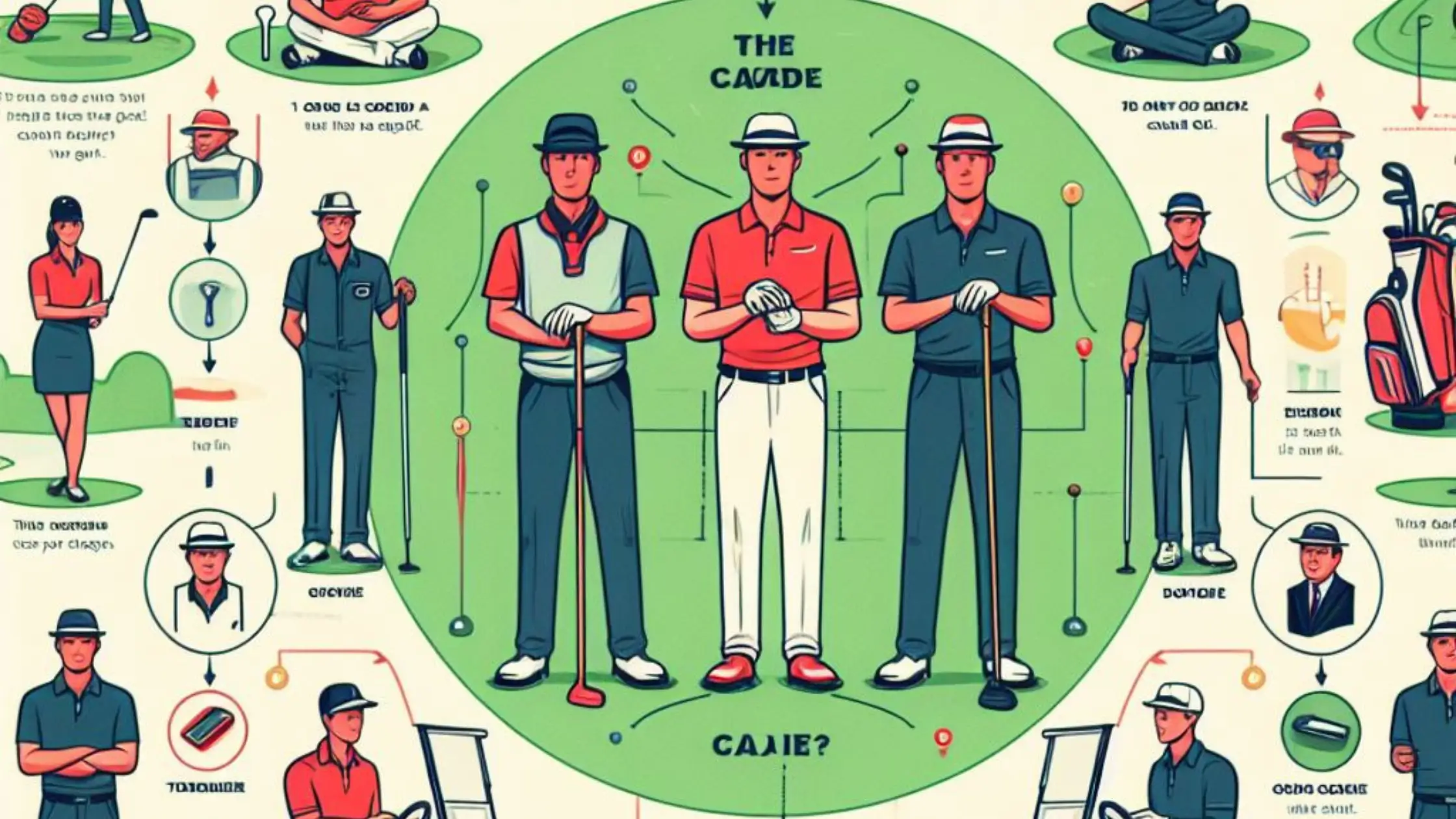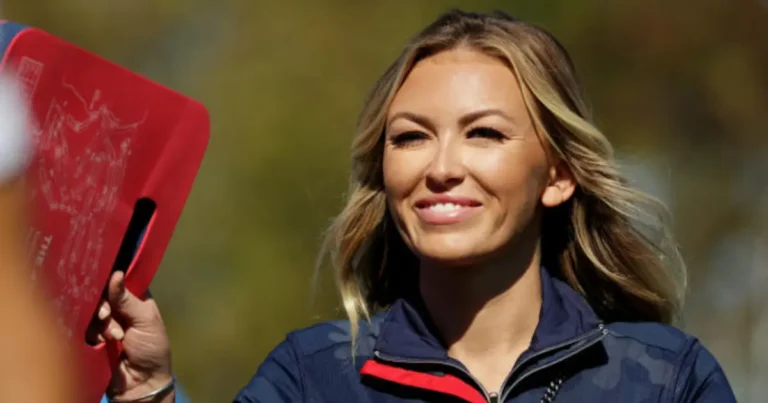What’s the difference? Understanding Forecaddies and Caddies in Golf
Golf is an ages-old sport, with the earliest records of a golf-like game being played in the Netherlands in the thirteenth century. As the sport evolved over the centuries, the caddie emerged as someone who carried and cared for a golfer’s clubs during a round.
However, at some high-end golf clubs and tournaments, you may hear the term “forecaddie” – what does it mean, and how does a forecaddie differ from a regular caddie? This article will provide an overview of caddies and forecaddies, outlining their respective roles and responsibilities on the golf course.
Definition and Role of Caddie
A caddie is someone who carries or wheels a golfer’s bag and clubs around the course while providing advice and guidance, such as recommending which club to use for specific shots. “Caddie” is derived from the French term “cadet,” which refers to a student or younger sibling.
Caddies have been an integral part of the game of golf since its inception in Scotland, and they continue to play an important role today, both at the recreational club level and on professional tours.
A caddie’s key responsibilities and duties include the following:
- Carrying the entire set of clubs in the golfer’s bag around the course for the duration of the round
- Offering advice to golfers on club selection, reading greens, marking balls, fixing ball marks, raking bunkers, and maintaining pace of play.
- Providing emotional support, confidence building, and strategy input based on the golfer’s strengths and weaknesses.
- Assisting golfers with pre-round preparations such as balls, tees, markers, and gloves.
- Maintaining clean equipment, fixing ball marks, gently setting down bags, and cleaning clubs/balls as needed.
- Studying the course and understanding the layout, slopes, and grass types to make strategic recommendations.
- Provide encouragement and motivation before, during, and after the round.
Caddies were traditionally used at high-end private golf and country clubs, but their role expanded dramatically with the rise of professional tournament golf. Today, almost all professional golfers use a caddie during tournaments to assist with course strategy, shot recommendations, and equipment transportation. Top professional caddies are extremely knowledgeable about their players’ abilities and clubs.
What is a forecaddie?
A forecaddie has some similarities to a caddie, but they serve very different purposes. A forecaddie is an optional position found at some of the most exclusive golf clubs and high-level tournaments. Instead of carrying or handling clubs directly, the forecaddie does the following:
- Walks ahead of the golfers to mark all tee shots with a flag or pole.
- Marks the location of each player’s tee shot before moving forward again.
- Provides recommendations on club selection, optimal landing or recovery zones, and depth/distance perception.
- Helps search for wayward shots near rough and hazards.
- Operates the flagstick while others putt.
- Maintains pace of play by positioning near the next tee box and signaling when ready.
- Fixes divots, rakes bunkers, and repairs ball marks for the entire group.
Essentially, a forecaddie acts as a personal “spotter” for each golfer’s shots throughout the round. This allows all players to directly observe tee shots rather than attempting to track the ball’s flight. It also emphasizes the importance of maintaining a proper pace and being mindful of the course conditions. A forecaddie provides an elevated level of service, attention, and golf support to members and guests who pay premium rates at exclusive clubs.
Comparing Caddie and Forecaddie Responsibilities
While both the caddie and forecaddie aim to improve a golfer’s on-course experience, their day-to-day responsibilities differ significantly:
Caddie Duties:
- Contains a complete set of clubs for one player and provides personalized advice and emotional support.
- Manages the course strategy and shot recommendations.
- Handles golf balls, tees and other equipment.
- Keeps clubs and grips clean throughout the round.
Forecaddie responsibilities:
Walking ahead, spotting shots for all players.
Marks each ball location with a flag or pole.
Offers club recommendations but to the entire group.
Does not handle golf clubs or balls.
Keeps pace and position near the next tee.
The chart below highlights some of the main differences between caddies and forecaddies:
Caddie Forecaddie
- Carry individual player bags.Does not carry bags.
- Works for individual golfers and groups of golfers.
- focuses guidance on one golfer.gives general advice to the group.
- Handles clubs, tees, and repairs divots for their players during the round.Does not handle equipment during the round.
Primary duty is to improve the experience for their assigned golfer.Enhancing the experience for all golfers.
The golfers they assist are compensated by the golf club.
Used at all levels of play, primarily by high-end member clubs.
Benefits of Forecaddies and Caddies
Regardless of their roles, both caddies and forecaddies strive to improve a golfer’s on-course playing experience while also upholding the high standards expected of quality golf courses.
Benefits of using a caddie include:
- Consistent advice tailored to your particular game and current form.
- Saves energy from carrying your bag and allows you to focus on swing mechanics.
- Expertise in reading green speeds, slopes, and breaks
- Emotional support in managing frustration and excitement during the round.
- Accountability for proper pace, scoring, penalties, and golf rules
- Detailed course management: strategies tailored to your strengths and weaknesses.
Forecaddie services offer the following benefits:
There is no need to take your eyes off shots to track ball flight or look for lost balls.
Extra attention to detail in accurately marking each shot location.
Added support for maintaining the proper pace of play for the entire group.
On-course recommendations for club choice and landing zones
Assist in maintaining quality course conditions by repairing divots, raking bunkers, etc.
Enhanced experience with increased attention to detail and guest needs.
Many high-end clubs use both caddies for members and guests, as well as forecaddie services for large groups or during peak playing times, to improve both the playing and course conditions.
Conclusion
In conclusion, a forecaddie plays a very different role than a caddie on a golf course. While both positions provide golfer assistance and strive to improve the playing experience, a caddie provides direct 1:1 service to a single golfer, whereas a forecaddie provides supplemental support and course management for entire playing groups. Forecaddies are also more concerned with maintaining an even pace of play, providing high-quality course care, and spotting balls consistently.
Hopefully, this overview has helped explain the distinction between caddies and forecaddies, two important roles that enhance the enjoyment of the game of golf. So, the next time you hear or read the term “forecaddie services” at a golf event, you’ll understand that they offer an additional layer of assistance beyond that of a standard caddie. A forecaddie, like a dedicated spotter for race car drivers, allows golfers to keep an eye on ball flight at all times, resulting in more accurate shot analysis. And anything we can do to improve the pace, course condition, and overall golf experience is always appreciated!







